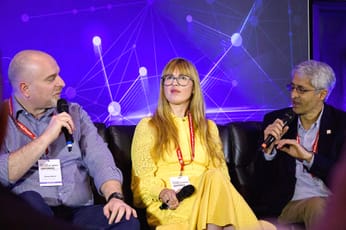
Media Literacy will not create trust in journalism
There's an assumption that just training people to be critical of media will help deal with misinformation. That's wrong.
Fascinating piece from Cécile Prieur, a John S. Knight journalism fellow at Stanford and deputy editor, Le Monde. She starts from a familiar position — worrying that the rise of subscription models is going to restrict access to high quality news to the wealthy elite, but finds herself in a very different place:
Gradually, I began to understand that by focusing just on the reach quality journalism could have I was missing the big picture. What about the readers who won’t pay for news but also don’t want to read it at all? How could we answer the unprecedented level of distrust in media today? How can we make sure that quality journalism does not only overcome economic barriers between it and readers but also cultural and social obstacles? In other words, how can we make our journalism more accessible, understandable and trustworthy?
And she is working towards some interesting answers:
But we cannot just do business as usual, making good journalism and hoping that people will notice. We, as journalists, have to be proactive to close the rising gap between us and readers. We have to find new paths to be more accessible and understandable for the public.
Her three point plan is interesting:
- Expand media access via trusted institutions like libraries
- Help readers better understand journalism to earn their trust
- Make media literacy a top priority of journalists
Should we be teaching media literacy?
A pragmatic approach - but it also makes me recall danah boyd's warnings about media literacy from last year:
Perhaps you want to encourage people to think critically about how information is constructed, who is paying for it, and what is being left out. Yet, among those whose prior is to not trust a news media institution, among those who see CNN and The New York Times as “fake news,” they’re already there. They’re looking for flaws. It’s not hard to find them. After all, the news industry is made of people in institutions in a society. So when youth are encouraged to be critical of the news media, they come away thinking that the media is lying.
Prieur goes some way to addressing this in her work:
We have to reach audiences and ask them if we are doing our jobs well or not, what are we missing in our coverage, what are our biases and blind spots. By framing a new conversation with audiences we lost, we can hope to reconnect. Far from the traditional way of delivering news, we need to find a new place for journalism to stand beside readers.
And clearly, engaged journalism is a critical part of this process. We can't just teach people to question, and assume that when they do so, they'll pick us. The evidence is to the contrary. We need to maintain a two-way dialogue - building trust is a long-term, human-driven process.
The engagement is probably more important than the media literacy - because I'm not sure how well-equipped we are an industry to teach it. Our own literacy is lacking.
New media literacy
I also wonder about how well equipped many journalists are to actually teach others about the wider scale of the media landscape, because there are whole chunks of it that many journalists just don't understand. boyd again:
[…] a segment of society has become so well-versed at digital communications — memes, GIFs, videos, etc. — that they can use these tools of expression to fundamentally destabilize others’ communication structures and worldviews. It’s hard to tell what’s real and what’s fiction, what’s cruel and what’s a joke. But that’s the point. That is how irony and ambiguity can be weaponized.
This doesn't look or feel like part of the journalism landscape to traditional journalists. But it is. And we need to adapt to that.
Sign up for e-mail updates
Join the newsletter to receive the latest posts in your inbox.










